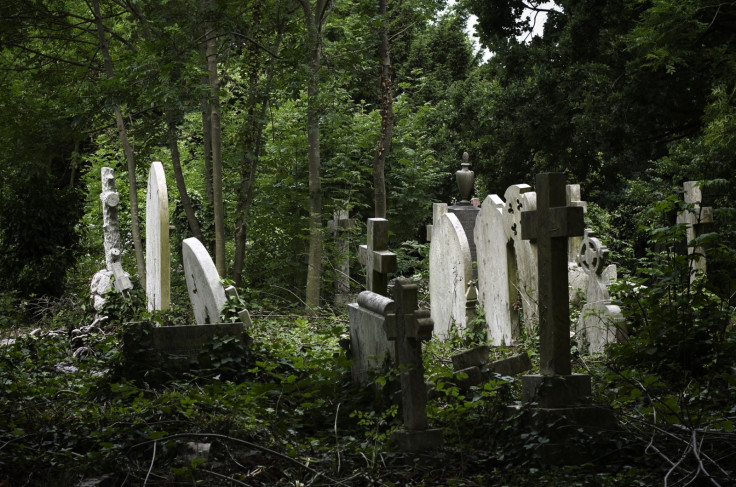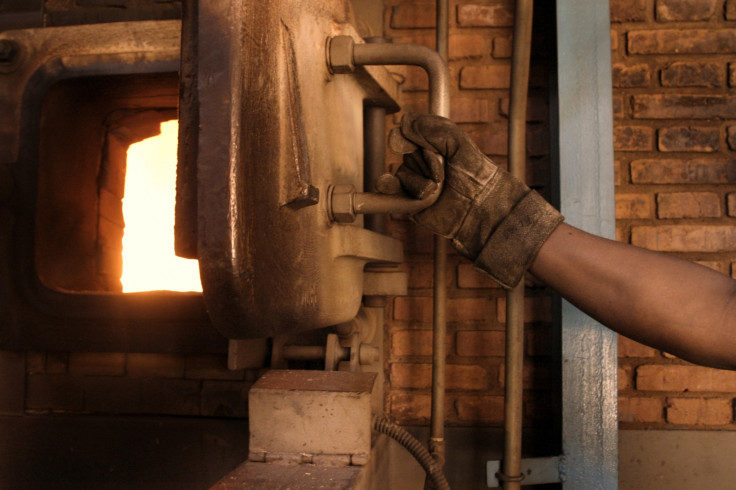The Corpse Project: How to make death, cremation and burials more environmentally friendly
Report calls for better understanding of the environmental impact of death, challenging burial myths.

Embracing change in our lives has been central to the environmental movement, but now we are being asked to consider our death as the final act of kindness to the planet.
Cremation and burial are the two most common methods of body disposal within the UK, and the country has also seen an increase in popularity of woodland burials. Now a leading forester and environmentalist is asking that we face our fears about death to consider if the current methods are the most suitable for a sustainable planet.
Dr Sophie Churchill, former chief executive officer of the National Forest and current president of the Royal Forestry Society, founded The Corpse Project. Its mission is to discover what to do with the body after death, and reveal which practices are better 'for the living and for the earth'.
The organisation was founded in 2015 with a £49,000 grant from the Wellcome Trust. It has just released a 12-month report calling for a better understanding of the science behind environmentally-friendly funeral options.
It wants better and increased funeral options available locally and support for innovation and good practice in the funeral industry. The report also calls for more research into the impact of the body after death – on both the living and the planet.
The Corpse Project's early findings challenge common assumptions about environmentally-friendly ways to die. These include:
- The belief that cremation has a high carbon impact.
Mourners' travel is a major factor in this as there are fewer natural burials grounds available than crematoria so the distance travelled by mourners is often greater. A cremation is said to use the same amount of fuel as a 500 miles journey, but that can easily be exceeded by mourners' car travel.
The project's research has shown that, if a crematorium was local for most mourners, the carbon burden of a cremation can be low, with the equivalent of 414.2kg of carbon dioxide compared to 636.3kg for woodland burial and 842.7kg for a 'field burial', if these are further away.
However The Corpse Project is also researching the other environmental aspects of the body, such as soil health and our connection to the earth and burial does well with these.
- Burying or scattering ashes helps plant life.
Cremated 'ashes' are mostly ground bone which are rich in calcium phosphate. However this is 'locked up' by the cremation process and does not release easily into the soil. Ashes are high in sodium, so it forms a chalky, salty layer which is not beneficial to plants.
Scattering ashes in wild 'green' places has grown in popularity but is having a negative effect. The Scottish Mountaineering Council is against the scattering of cremated remains, as the regular addition to mountain tops is changing the local ecology.
- A tree planted on a grave is nourished by the body beneath.
Dr Churchill said: "We question whether a tree really would find the nutrients released by a body beneficial. It's not natural compost and is quite oily compared to the ideal conditions."
- Burial return nutrients to the earth.
The Corpse Project's analysis has demonstrated that we bury our bodies too deep within the ground for 'earth-to-earth' to make a difference. Any useful nutrients released by the body leach downwards where then they enter our water system.
Churchill said: "With 500,000 deaths a year in England and Wales and a substantial industry serving them, what we do with our dead bodies matters at the environmental level. Most of us don't know much about how the body decomposes, whether it returns to the natural cycle of the earth through burial or as ashes, and the options for its care and treatment after death. For some people, knowing more is important."
A long obsession with death
Dr Richard Barnett is a historian who initially trained as a doctor. He is fascinated by our attitudes towards disease and what history can teach us. He is conducting research into practices and cultural attitudes towards the corpse. "I have never felt more enthusiastic or enlivened by a scholarly field, which I appreciate is a paradox," he says.
"Although we, as a society, are seen as being afraid of facing death, you can see that we are fascinated it. You only have to go to the cinema or turn on the telly to see our obsession with zombies and vampires, and art galleries are full of depictions of death. It's similar to the Victorian Age, when people were supposedly very prudish but at the same time fascinated by sex."

Dr Barnett, a scholar at Pembroke College, University of Cambridge, believes that conservatism and an out-dated belief in what is hygienic is preventing us from moving forward with new methods of treating the body after death: "There is a fear that the body poses a health risk. That is no longer true, but it still drives a lot of faith in cremation and attitudes around the corpse."
Despite cremation being the most common method of dealing with the corpse after death, accounting for about 75% of funerals in the UK, it was illegal in the United Kingdom until late 1800s and was then regulated under Cremation Act of 1902.
Part of the growing appeal of cremation in those times was the understanding that the extreme heat in the process was a highly effective method of ensuring disease did not live on within a decaying corpse.

Churchill said: "The issue is that even though cremation is a highly effective and 'green' funeral, in many ways it could be better. For example, in a modern cremation corpses are burned immediately, which means the furnace is lit and turned off. If we could accept it, it would be better to cremate multiple corpses at once."
The next phase of The Corpse Project is to research alternative methods of 'disposal' of a corpse, not just from a scientific perspective but also culturally and psychologically. "Better options could help us all face the ends of our lives and the strangeness of death," Churchill said. "We hope to make sure we can die in a way which is good for us and for the Earth."
© Copyright IBTimes 2025. All rights reserved.






















